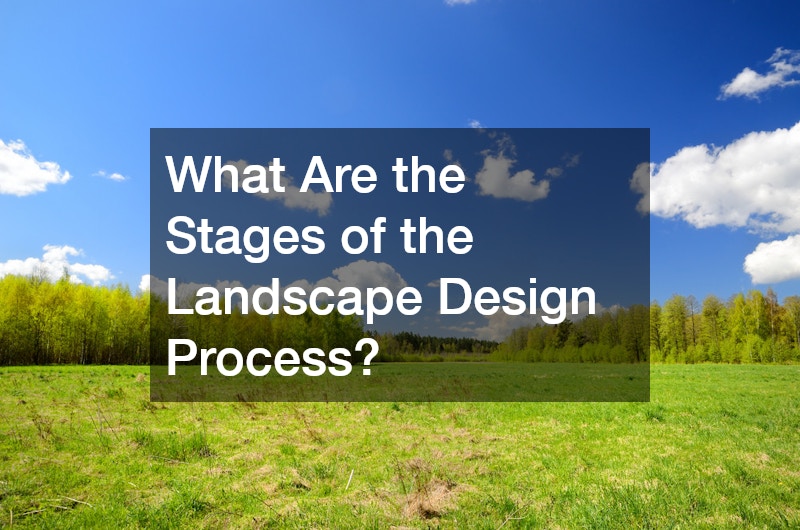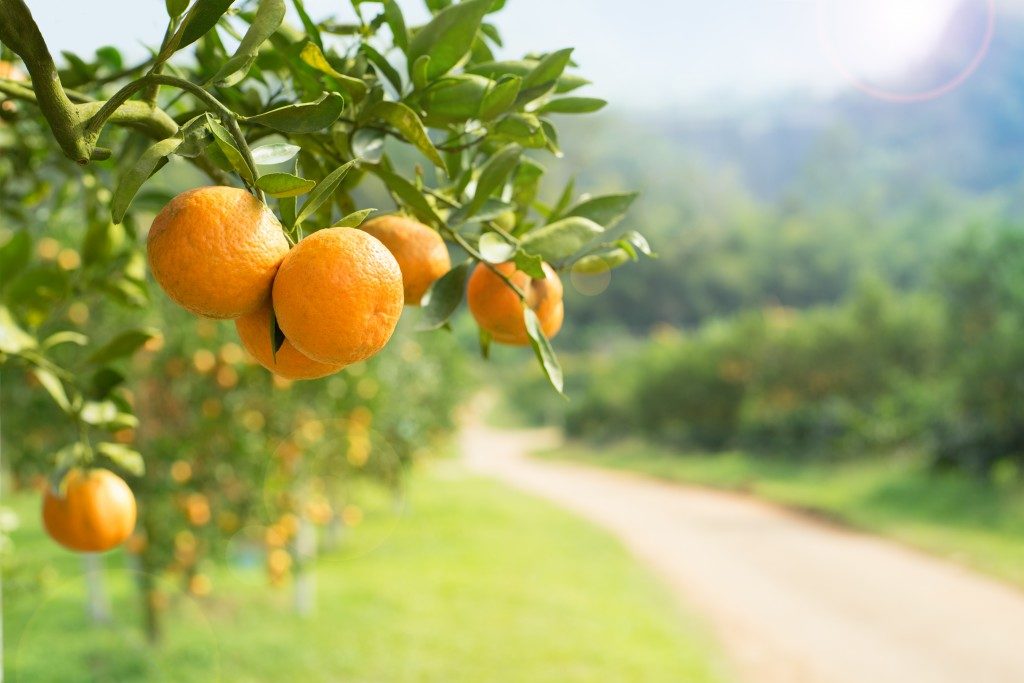Creating Your Own Unique Landscape
The landscape design process is an essential journey that transforms an outdoor space from a simple plot of land into a cohesive, functional, and beautiful environment. This process is not just about aesthetics; it integrates practical elements and tailored solutions that reflect the unique needs of the space and its owners. With thoughtful planning and execution, landscape design can enhance the natural beauty of any property while improving its usability and value. Each stage in this process is meticulously crafted to ensure that the final result not only meets but exceeds expectations. By understanding the stages of the landscape design process, homeowners and property managers can better appreciate the meticulous effort and expertise that go into crafting an outdoor space that is both stunning and sustainable.
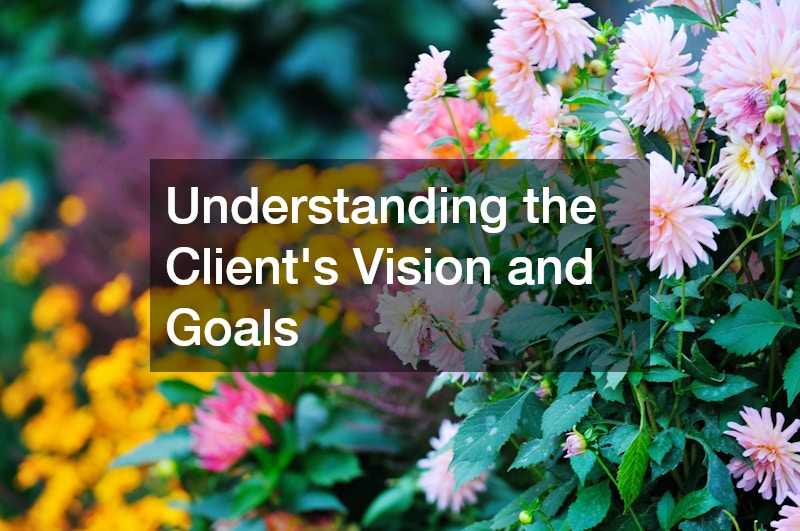
Understanding the Client’s Vision and Goals
The first stage of the landscape design process revolves around understanding the client’s vision and goals. This initial phase is crucial as it sets the foundation for the entire project. Designers begin by engaging with clients to discuss their aspirations, preferences, and functional requirements. It is during this stage that essential questions are asked: What type of activities will the space support? Are there any specific features or focal points the client envisions? This dialogue helps establish the purpose of the design and ensures that the overall vision aligns with the client’s expectations.
In a more specific sense, this stage includes gathering detailed information about the client’s preferred styles, color schemes, and desired landscape elements. For example, a client may wish for a serene garden with water features or a vibrant space for entertaining guests. Incorporating these preferences early in the landscape design process allows for a tailored approach that blends the client’s unique taste with the practical aspects of outdoor living. This stage is also where considerations for environmental factors, such as sunlight, soil type, and regional climate, are noted to align the project with the landscape’s natural characteristics.
Conducting a Site Analysis
Once the client’s vision is clear, the next step in the landscape design process is conducting a thorough site analysis. This stage is essential for understanding the current conditions of the property, which in turn influences the design plan. Landscape designers evaluate various aspects of the site, including its topography, existing vegetation, drainage patterns, and any potential challenges such as slopes or erosion. This comprehensive assessment helps identify strengths and weaknesses in the current layout and guides strategic decision-making in the subsequent design phases.
More specifically, a site analysis often includes evaluating how landscape lighting will fit into the overall design. For example, designers take note of areas that require enhanced visibility, such as pathways or entrances, as well as spaces where accent lighting might highlight special features like trees or sculptures. By understanding the interplay between light and shadow, landscape professionals can develop plans that incorporate lighting to boost both safety and aesthetics. This attention to detail ensures that the landscape design process not only beautifies the property but also enhances its functionality and ambiance.
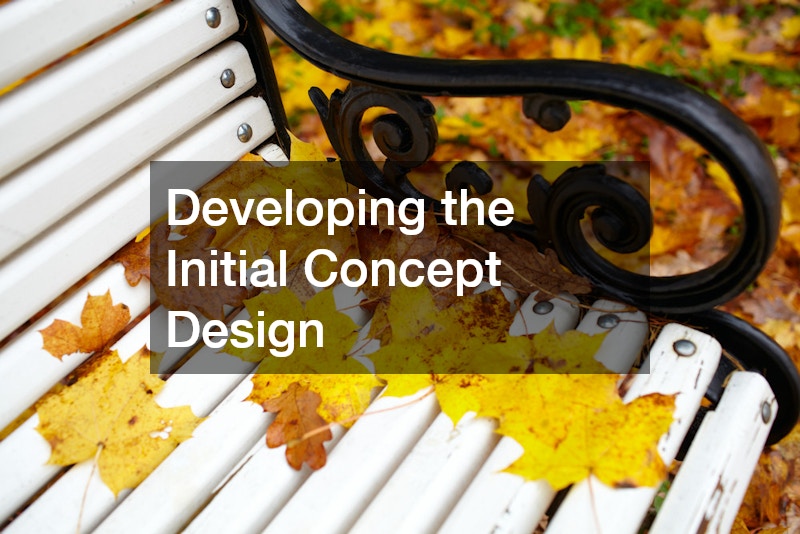
Developing the Initial Concept Design
The next phase in the landscape design process is developing the initial concept design. This stage takes the ideas and goals discussed with the client and begins to translate them into a visual representation. Designers create rough sketches and layout plans that capture the overall vision, showcasing where various elements like pathways, plant beds, and structures will be placed. The concept design acts as a blueprint, offering a clear overview of how the different aspects of the landscape will come together cohesively. This step provides an opportunity for preliminary feedback and adjustments before moving to more detailed plans.
On a more detailed level, the concept design incorporates elements that reflect the client’s specific desires, such as the inclusion of masonry services for outdoor patios or stone pathways. These early visual drafts might highlight focal points like water features or seating areas, ensuring they are positioned in a way that maximizes both beauty and function. Integrating masonry services at this stage can help determine how structural features will complement the surrounding greenery and overall flow of the landscape. This combination of creative and practical thinking helps set the tone for a well-rounded and successful landscape design process. A landscaping company can help you.
Creating a Detailed Plan Layout
Creating a detailed plan layout is a critical step in the landscape design process where the initial concept design is refined into a more precise and actionable plan. This layout includes exact measurements, materials, and placement of all major components within the space. The detailed plan ensures that every aspect of the design is mapped out clearly, from planting schemes to walkways and seating areas. This stage helps bridge the gap between design vision and practical implementation, ensuring that all logistical aspects are addressed before construction begins.
In terms of specific elements, this phase often involves collaborating with hardscape installers to ensure the proper placement and integration of non-plant elements like patios, walls, and pathways. Hardscape features are crucial for defining the structure of the landscape and complementing the softscapes, such as flower beds and lawns. By involving hardscape installers early in the process, designers can ensure that these features are seamlessly integrated and built to last, enhancing the overall durability and appeal of the final design.
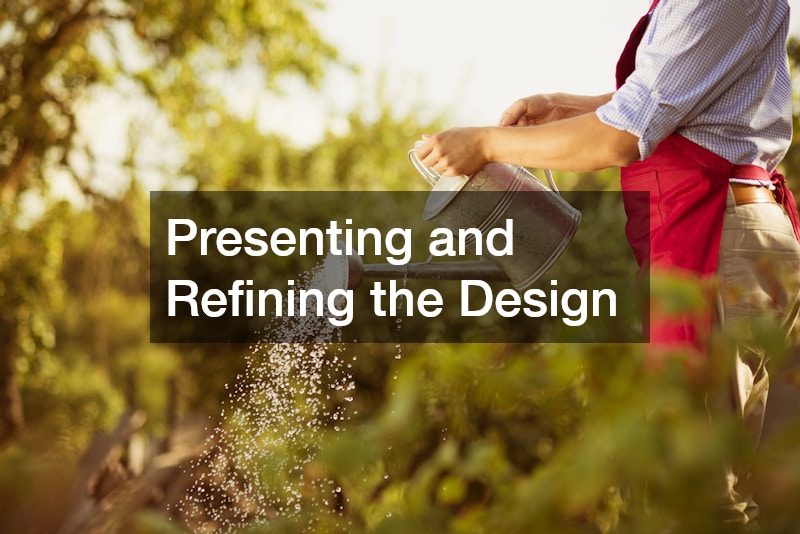
Presenting and Refining the Design
Presenting and refining the design is an important stage where landscape designers showcase their detailed plans to clients for feedback and final adjustments. This collaborative phase allows clients to review the comprehensive layout and suggest changes or modifications that better align with their vision. It is an opportunity for designers to explain how each element of the plan contributes to the functionality and aesthetics of the space, ensuring that the client’s input is considered before the project moves forward.
Refinements at this stage may include adjustments to specific features such as lawn irrigation service plans or changes in the placement of decorative elements. For example, if the client feels that certain areas need more or less greenery or wishes to add a water-saving irrigation system, designers can incorporate these requests to better meet their expectations. This back-and-forth helps ensure that the landscape design process is not only thorough but also client-centric, leading to a finalized design that is ready for implementation.
Finalizing the Master Plan
Finalizing the master plan is a significant step in the landscape design process where all elements are locked into place, preparing the project for the construction phase. This comprehensive document includes detailed specifications, materials, and placement instructions for each part of the design. The master plan ensures that everyone involved in the project, from contractors to installers, has a clear understanding of what is required to bring the vision to life. This step also allows for thorough review and verification that the design meets both aesthetic and functional goals.
Specifically, finalizing the master plan might involve including specialized services such as lawn irrigation service systems to maintain the health and appearance of the landscape. By planning out where and how these systems will be installed, designers can ensure efficient water distribution and sustainability. This detail-oriented approach helps set the stage for a seamless construction phase and ensures that the landscape design process incorporates all necessary components for a thriving outdoor space.

Selecting Plant Materials and Hardscapes
Selecting plant materials and hardscapes is an essential part of the landscape design process that combines aesthetics and practicality. This stage involves choosing the types of plants, trees, and shrubs that will best suit the environment while achieving the desired visual effect. Additionally, it includes deciding on hardscape elements such as pathways, walls, and decorative features that add structure and interest to the space. The goal is to strike a balance between softscapes and hardscapes to create a harmonious and visually appealing outdoor environment.
In more detail, selecting these elements often involves considering HVAC service requirements to maintain optimal conditions for specific plants or garden structures. For example, certain plant types may need temperature-controlled environments, especially if the landscape includes greenhouses or enclosed patio spaces. By taking HVAC service into account during this stage, designers can ensure that chosen plants and structures are sustainable and suitable for the client’s climate and preferences. This step solidifies the groundwork for a cohesive landscape design process that integrates natural and man-made elements effectively.
Preparing Budget Estimates and Timelines
Preparing budget estimates and timelines is a vital stage of the landscape design process that ensures the project remains feasible and on schedule. During this phase, designers compile detailed cost estimates for materials, labor, and any additional services required for the project. This comprehensive budgeting helps clients understand the financial commitment involved and allows for adjustments to stay within their desired budget. Simultaneously, timelines are established to map out the construction process, detailing when each phase will take place and how long it is expected to last.
More specifically, preparing these estimates and timelines may include conducting a well inspection to assess any potential water sources or issues on the property that could impact the project. Understanding the availability and condition of water resources is crucial, especially if features like water gardens or irrigation systems are part of the design. By incorporating a well inspection into the planning phase, designers can create a more accurate budget and timeline, ensuring that the landscape design process progresses smoothly and without unexpected delays or costs.
Implementing the Landscape Project
The implementation phase is where the vision of the landscape design process comes to life. This stage involves the actual construction and installation of all the planned elements, from planting trees and flowers to building hardscape features such as patios, pathways, and retaining walls. Contractors, hardscape installers, and other specialists work together to ensure that each component is constructed according to the detailed master plan. This phase requires careful coordination and oversight to ensure that the project adheres to timelines, budget, and quality standards.
On a more specific note, the implementation may include collaborating with a fence company to install fencing that complements the overall design and provides added functionality. Whether for aesthetic appeal or increased security, including fencing during the construction phase ensures a cohesive look that blends seamlessly with the surrounding landscape. This step not only completes the visual appeal but also adds practical benefits that align with the overall goals of the landscape design process.
Reviewing and Making Adjustments After Installation
Reviewing and making adjustments after installation is the final step in the landscape design process that ensures everything has been executed as planned. This phase involves a thorough inspection of the completed project to confirm that each element functions as intended and meets the client’s expectations. Landscape designers may walk through the space with the client, addressing any concerns and identifying areas that may need modifications or additional attention. This step is essential for fine-tuning the design and ensuring long-term satisfaction.
More specifically, reviewing may involve assessing elements such as window services to verify that any views from inside the home are optimized and that natural light enhances the outdoor space. This attention to detail ensures that both the indoor and outdoor environments are harmonious and well-integrated. Any necessary adjustments can be made promptly, finalizing the project with a focus on both beauty and functionality. This step reinforces the importance of thoroughness in the landscape design process, guaranteeing that the final result is polished and complete.
Maintaining Your Newly Designed Landscape
Completing a landscape design project involves more than just creative ideas; it requires a structured and methodical approach to transform concepts into reality. The landscape design process starts with understanding the client’s vision and analyzing the site, followed by developing and refining designs that incorporate practical and aesthetic elements. Through detailed planning, budget considerations, and strategic implementation, each phase builds on the last to create a cohesive, functional space. By incorporating specialized services, such as masonry, HVAC, and well inspections, designers can ensure the final result is both beautiful and sustainable. Ultimately, the process concludes with reviewing and adjusting the project to achieve the client’s ideal outdoor space. By understanding and appreciating each stage of the landscape design process, property owners can enjoy a well-crafted environment that meets their needs and enhances their property for years to come.

